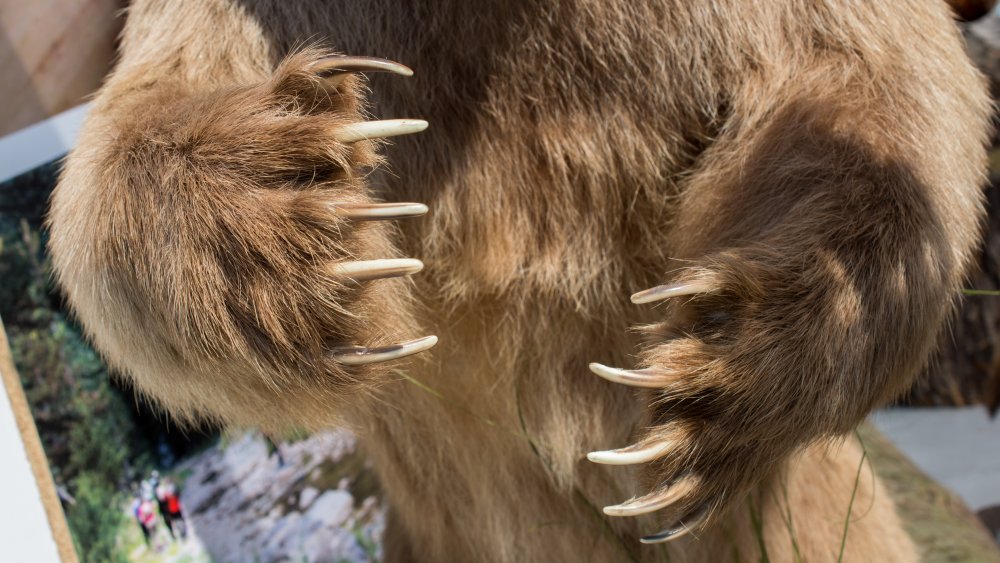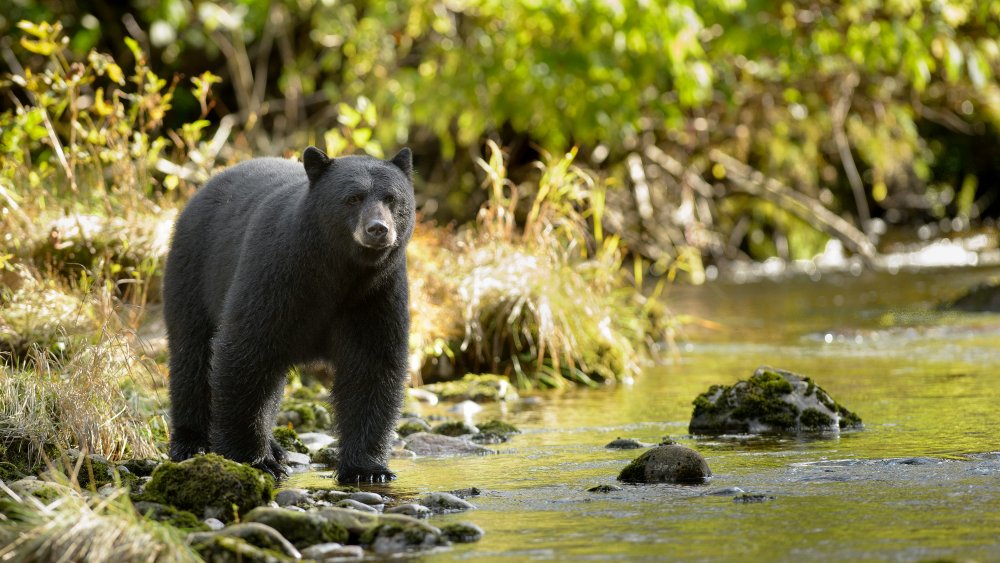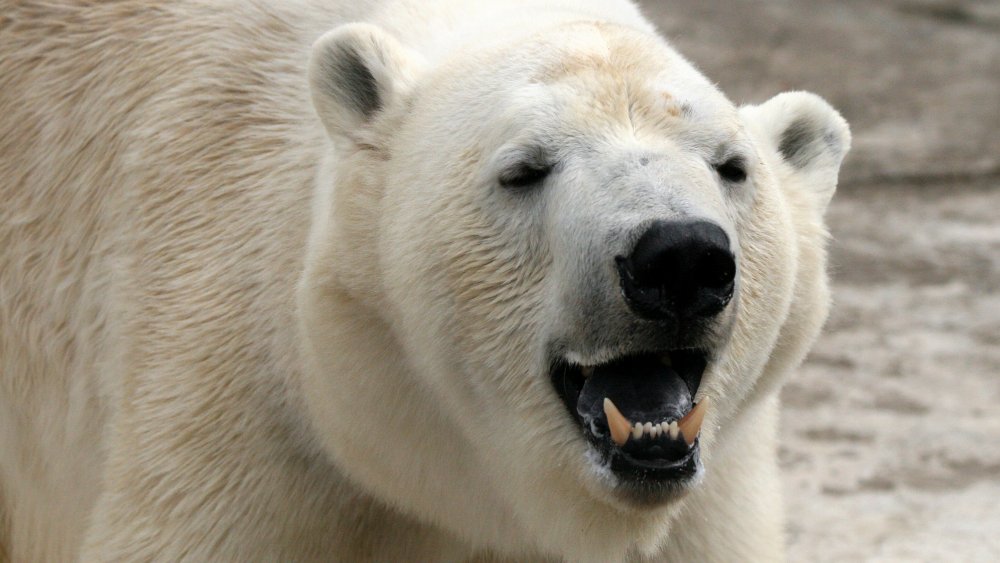How To Survive A Bear Attack
The brown bear — of which the grizzly is one — flummoxed the members of the Lewis and Clark Expedition when they first met one back in the early 1800s. The Library of Congress quotes the expedition's leadership. Wrote Lewis: It was a "most tremendous looking animal, and extreemly hard to kill." Clark was also impressed: "verry large and a turrible looking animal." (Nobody was hired for their spelling, apparently.) It took 10 shots from Clark and others to kill the beast. Another expedition member was chased up a tree where he sat for the better part of a day before the grizzly got bored (or hungry) enough to leave.
Let's break it down: How you should react to a bear encounter depends on what kind of bear you're facing. If you're out hiking and neglect to bring your Field Guide to North American Apex Predators with you (though maybe there's an app, if you can get a signal) there are still a few tells to keep in mind.
In general, don't meet bears. They really don't want to meet you, either. They're predators, and they get hungry, and while many bears are omnivores (consuming anything from berries to grubs to you), any port in a storm when you're hangry.
Black bears aren't as aggressive, but they climb trees really well
If you're determined to head out into bear country, make sure you're packing bear spray, a nifty survival gadget that will definitely deter a bear that's making moves on you. There's no real good news about bear encounters, but if you meet up with a bear in the woods, doing what bears do there, check for a telltale hump over the shoulders. No hump, even if the bear is brownish, and you have a black bear. Not quite so bad news: It's going to be much less aggressive than the brown bear. You can probably stand your ground and make yourself big — extend arms, pick up a handy tree limb. The bear might keep approaching anyway. Use the bear spray when it's around 40-50 feet away.
No matter what kind of bear it is, don't bother running. They're all faster than you are over open ground. If it's a black bear, it's not actually going to help to climb a tree, because black bears are superb climbers. You might be in a better defensive position and able to climb higher, where the smaller branches won't support the black bear's weight. But if they're motivated, they will climb after you.
Brown bears are more problematic, because they're more aggressive by nature. Also much, much bigger — the first one Lewis and Clark met was estimated at 600 pounds, a lot of it teeth and claws. Also intelligent, says Outside Online. Bear? Freeze and have that bear spray handy.
Polar bears are probably not friendly beasts
If it stands up, it's possible it's just curious. If it charges, spray. If it keeps coming, your best bet is to play dead by curling into a fetal position, tucking your head, and covering your neck with your hands. If you're lucky, and the bear isn't that interested, it might — might — leave you alone. But stay curled and dead-like, because brown bears will make absolutely sure that what they perceive as a threat is indeed neutralized. (Remember the guy who got chased up a tree for the better part of a day? Brown bears are also patient.)
If your travel plans include the arctic regions of Alaska, there's the possibility that you'll have a close encounter with a polar bear. They are the largest land carnivores on Earth, bar none, says The Manual.
There's not much you can do if a polar bear decides to turn you into steak tartare, says Treehugger. Playing dead won't dissuade it; nor will making yourself appear bigger than you are. You can try to fight back — attack sensitive areas, like the eyes or nose — but if you're close enough to do that you're close enough for the bear to use its claws, which are really effective at that steak tartare thing we mentioned earlier. So besides bear spray, before you leave for your trip, maybe put your last will and testament where your survivors can find it.


